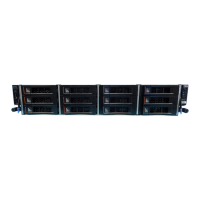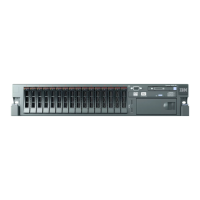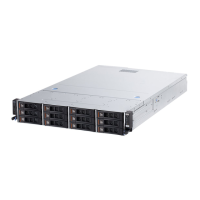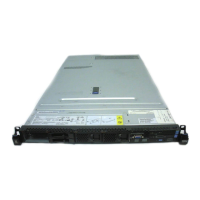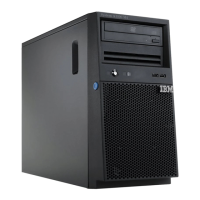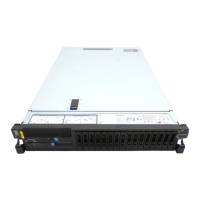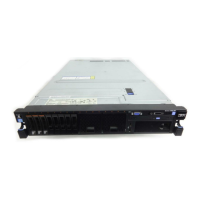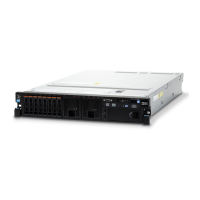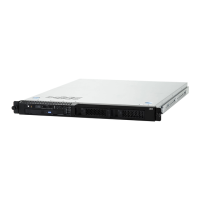v All hot-swap drives in the server should have the same throughput speed rating.
Using hard disk drives with different speed ratings will cause all drives to operate
at the throughput speed of the slowest drive.
The following illustration shows how to install a hot-swap hard disk drive.
Attention: To maintain proper system cooling, do not operate the server for more
than 10 minutes without either a drive or a filler panel installed in each bay.
To install a drive in a hot-swap bay, complete the following steps:
1. Read the safety information that begins on page vii, “Installation guidelines” on
page 35, and “Handling static-sensitive devices” on page 37.
2. Touch the static-protective package that contains the drive to any unpainted
metal surface on the server; then, remove the drive from the package and place
it on a static-protective surface.
3. Remove the drive filler panel from one of the empty hot-swap bays.
4. Install the hard disk drive in the hot-swap bay:
a. Orient the drive as shown in the illustration.
b. Make sure that the tray handle is open.
c. Align the drive assembly with the guide rails in the bay.
d. Gently push the drive assembly into the bay until the drive stops.
e. Push the tray handle to the closed (locked) position.
f. If the system is turned on, check the hard disk drive status LED to verify that
the hard disk drive is operating correctly.
After you install a hard disk drive, the green activity LED flashes as the disk
spins up. The yellow LED turn off after about 1 minute. If the new drive starts
to rebuild, the yellow LED flashes slowly and the green activity LED remains
lit during the rebuild process. If the yellow LED remains lit, see the Problem
Determination and Service Guide on the IBM Documentation CD for hard
disk drive problem solutions.
Note: You might have to reconfigure the disk arrays after you install hard disk
drives. See the RAID documentation on the IBM ServeRAID Support CD for
information about RAID controllers.
If you have other devices to install or remove, do so now. Otherwise, go to
“Completing the installation” on page 89.
Chapter 2. Installing optional devices 55

